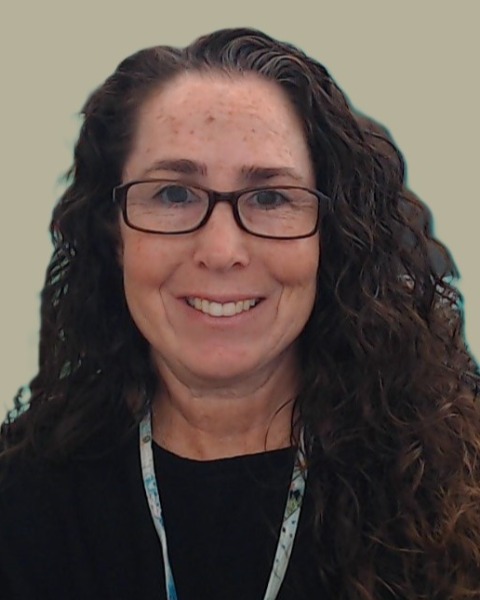Addressing Youth Mental Health and Suicide Prevention through Telehealth (Board#2)
Tuesday, April 1, 2025
6:00 PM - 7:30 PM East Coast USA Time
Location: Union Station Ballroom Foyer, 1st Floor, Conference Center

Amy Smuro, MA (she/her/hers)
Research Scientist 3
NJ Department of Health
Trenton, New Jersey, United States
Lauren Schoch, LPC
Telehealth Project Manager
Hackensack Meridian Health
Neptune, New Jersey, United States
Presenter(s)
Abstract : Research
Aims: In 2021, the American Academy of Pediatrics (AAP), American Academy of Child and Adolescent Psychiatry (AACAP) and Children’s Hospital Association declared a state of emergency in response to the mental health challenges facing children, adolescents, and their families during the pandemic. Another study from the National Institute of Child Health and Human Development (2022) found that during the pandemic, the percentage of adolescents screening positive for symptoms of depression increased from 5% to 6.2% and those screening positive for suicide risk increased from 6.1% to 7.1%. The researchers obtained death record data from 14 states, New Jersey being one of them. For each state, they compared the average of suicide counts from 2015 to 2019 to suicide counts from 2020, the first year of the pandemic.
Compared to before the pandemic, five states had an increase in the number of youth suicides: Georgia (87.8 to 106), Indiana (62.8 to 83), New Jersey (32.4 to 37), Oklahoma (54.8 to 67) and Virginia (67.6 to 85). Combined, all states saw an increase in absolute suicide numbers (835.6 to 903)1.
NJ PMHCA is currently utilizing innovative services and education through HRSA funding to educate on youth mental health and suicide prevention through both providers with Patient Safety Organization (PSO) Safe Table education and will also be providing services to hospitalized youth through an inpatient transition support services pilot.
Methods: The PMHCA program will be piloting Inpatient Transitional Support Services (ITSS). This program will provide short term support services through telehealth to patients ages 0-21 being discharged from a Behavioral Health Inpatient Unit. ITSS is scheduled to begin December 2024 and will be provided by HMH and piloted in Carrier Clinic, a pediatric inpatient facility and part of the HMH system. Through telehealth, discharge plans will be reviewed with the patient/family, will offer psychoeducation/guidance and care coordination with community resources. This will help to reduce the number of recurring ED visits and hospitalizations prior to their scheduled visit with a pediatric psychiatrist after inpatient release; this will also allow the patient to receive the appropriate level of care needed with in the community.
The Garden State Patient Safety Center, NJHA's Patient Safety Organization (PSO), is the only PSO in N.J. As a hospital association, they are able to draw the linkages between NJ-nuanced priorities and hospital-based harm reduction/quality improvement efforts.
IT and data specialists work directly with NJ hospitals, ambulatory care, assisted living and long-term care members to ensure seamless mapping of data - to foster a workflow that meets your staffing needs and allows for data comparison across hospitals. This drives the discussion after the case presentation and allows members to have the difficult discussions in a protected environment where patient safety work product and quality improvement are key. The subject matter experts are the same team members who interact with hospital staff on day-to-day issues, so we recognize the importance of meeting staff "where they are" in the discussions. PSO Safe Table discussions are designed to empower providers to engage in robust, meaningful patient safety and quality improvement activities. Safe Tables are open to the audience hospitals wish to invite so shared learning is collaborative and crosses traditional functional lines. The Safe Tables offered are virtual forums where the current topic is, "Hospital Response to the Pediatric Mental Health Crisis: A Safe Table Series.” This is a 3-part series on mental health, suicide prevention and quality improvement aligned with the initiative goal as it relates to children and adolescents.
Results: The desired result of the ITSS program is to support youth and families after discharge from an in-patient psychiatric facility as they wait for outpatient services and specifically reduce the incidence of repeat suicide attempts and death by suicide during this time.
Patient Safety Organization (PSO) Safe Tables for the Hospitals/Emergency Department participants of the virtual education included pediatricians and some pediatric subspecialists that may interact with children, adolescents, and their families in inpatient and ambulatory settings; licensed professionals, advanced practice professionals and registered nurses; behavioral health and substance use specialists; and other members of the health care team or support mental health screening, supports, care and referral of children and adolescents and their families/support systems.
In participant post survey results they were able to provide examples para-verbal and non-verbal communication to use with pediatric patients, examples of 'post-screening' questions you can apply when identifying a concern using the PSC-Y-37, identification and examples of non-suicidal self-injury and suicide risk.
Conclusion: Inpatient Transition Support Services: Pilot- As a pilot the conclusion at this time is TBD, project to begin December 2024.
PSO Safe Table Post surveys found that the educational forum increased the attendee’s level of confidence on all aspects of the learning objectives. Warning signs and risk factors of youth, the conversational model to assess suicide risk in young clients and finding a way to build an empathic bridge between clinicians and parents/families to improve support for pediatric patients. All agreed that the Safe Table addressed an existing problem, impacting medical professionals, and in turn, the overall health of the people of New Jersey and agreed that it was valuable to their practice and job requirements.
Through the use of telehealth, it allows for a widespread educational forum that can reach hospitals statewide. The program was able to be developed with providers schedules in mind and would be completed during lunch for an hour.
Learning Objectives: At the conclusion of this presentation, the participant should be able to summarize the education offered to hospitals and Emergency Departments in NJ. The participant should also be able to discuss a new innovative way to utilize technology to provide resources and assist youth transitioning out of an inpatient facility.
Aims: In 2021, the American Academy of Pediatrics (AAP), American Academy of Child and Adolescent Psychiatry (AACAP) and Children’s Hospital Association declared a state of emergency in response to the mental health challenges facing children, adolescents, and their families during the pandemic. Another study from the National Institute of Child Health and Human Development (2022) found that during the pandemic, the percentage of adolescents screening positive for symptoms of depression increased from 5% to 6.2% and those screening positive for suicide risk increased from 6.1% to 7.1%. The researchers obtained death record data from 14 states, New Jersey being one of them. For each state, they compared the average of suicide counts from 2015 to 2019 to suicide counts from 2020, the first year of the pandemic.
Compared to before the pandemic, five states had an increase in the number of youth suicides: Georgia (87.8 to 106), Indiana (62.8 to 83), New Jersey (32.4 to 37), Oklahoma (54.8 to 67) and Virginia (67.6 to 85). Combined, all states saw an increase in absolute suicide numbers (835.6 to 903)1.
NJ PMHCA is currently utilizing innovative services and education through HRSA funding to educate on youth mental health and suicide prevention through both providers with Patient Safety Organization (PSO) Safe Table education and will also be providing services to hospitalized youth through an inpatient transition support services pilot.
Methods: The PMHCA program will be piloting Inpatient Transitional Support Services (ITSS). This program will provide short term support services through telehealth to patients ages 0-21 being discharged from a Behavioral Health Inpatient Unit. ITSS is scheduled to begin December 2024 and will be provided by HMH and piloted in Carrier Clinic, a pediatric inpatient facility and part of the HMH system. Through telehealth, discharge plans will be reviewed with the patient/family, will offer psychoeducation/guidance and care coordination with community resources. This will help to reduce the number of recurring ED visits and hospitalizations prior to their scheduled visit with a pediatric psychiatrist after inpatient release; this will also allow the patient to receive the appropriate level of care needed with in the community.
The Garden State Patient Safety Center, NJHA's Patient Safety Organization (PSO), is the only PSO in N.J. As a hospital association, they are able to draw the linkages between NJ-nuanced priorities and hospital-based harm reduction/quality improvement efforts.
IT and data specialists work directly with NJ hospitals, ambulatory care, assisted living and long-term care members to ensure seamless mapping of data - to foster a workflow that meets your staffing needs and allows for data comparison across hospitals. This drives the discussion after the case presentation and allows members to have the difficult discussions in a protected environment where patient safety work product and quality improvement are key. The subject matter experts are the same team members who interact with hospital staff on day-to-day issues, so we recognize the importance of meeting staff "where they are" in the discussions. PSO Safe Table discussions are designed to empower providers to engage in robust, meaningful patient safety and quality improvement activities. Safe Tables are open to the audience hospitals wish to invite so shared learning is collaborative and crosses traditional functional lines. The Safe Tables offered are virtual forums where the current topic is, "Hospital Response to the Pediatric Mental Health Crisis: A Safe Table Series.” This is a 3-part series on mental health, suicide prevention and quality improvement aligned with the initiative goal as it relates to children and adolescents.
Results: The desired result of the ITSS program is to support youth and families after discharge from an in-patient psychiatric facility as they wait for outpatient services and specifically reduce the incidence of repeat suicide attempts and death by suicide during this time.
Patient Safety Organization (PSO) Safe Tables for the Hospitals/Emergency Department participants of the virtual education included pediatricians and some pediatric subspecialists that may interact with children, adolescents, and their families in inpatient and ambulatory settings; licensed professionals, advanced practice professionals and registered nurses; behavioral health and substance use specialists; and other members of the health care team or support mental health screening, supports, care and referral of children and adolescents and their families/support systems.
In participant post survey results they were able to provide examples para-verbal and non-verbal communication to use with pediatric patients, examples of 'post-screening' questions you can apply when identifying a concern using the PSC-Y-37, identification and examples of non-suicidal self-injury and suicide risk.
Conclusion: Inpatient Transition Support Services: Pilot- As a pilot the conclusion at this time is TBD, project to begin December 2024.
PSO Safe Table Post surveys found that the educational forum increased the attendee’s level of confidence on all aspects of the learning objectives. Warning signs and risk factors of youth, the conversational model to assess suicide risk in young clients and finding a way to build an empathic bridge between clinicians and parents/families to improve support for pediatric patients. All agreed that the Safe Table addressed an existing problem, impacting medical professionals, and in turn, the overall health of the people of New Jersey and agreed that it was valuable to their practice and job requirements.
Through the use of telehealth, it allows for a widespread educational forum that can reach hospitals statewide. The program was able to be developed with providers schedules in mind and would be completed during lunch for an hour.
Learning Objectives: At the conclusion of this presentation, the participant should be able to summarize the education offered to hospitals and Emergency Departments in NJ. The participant should also be able to discuss a new innovative way to utilize technology to provide resources and assist youth transitioning out of an inpatient facility.
